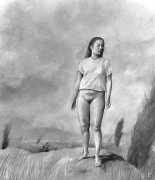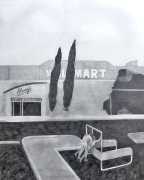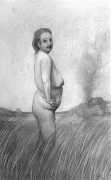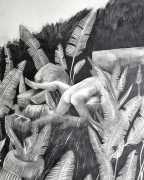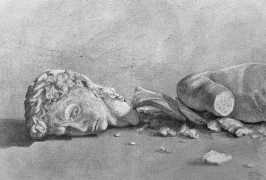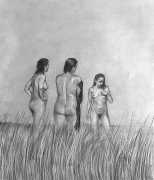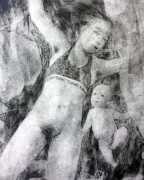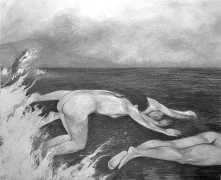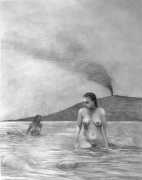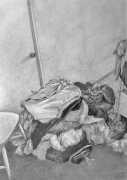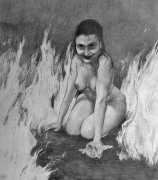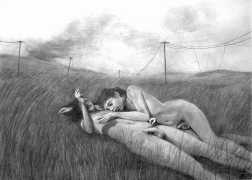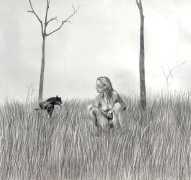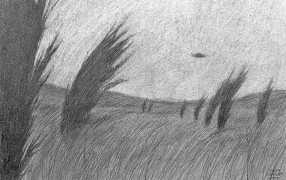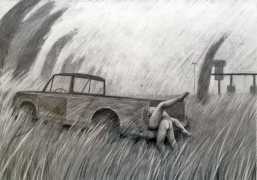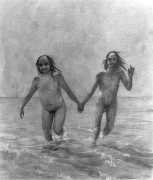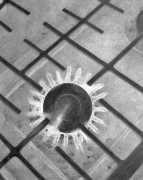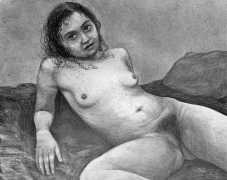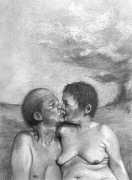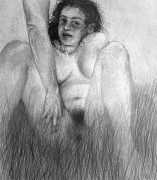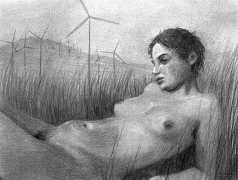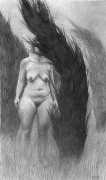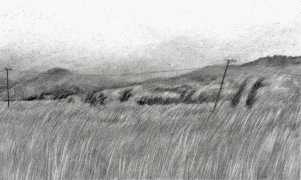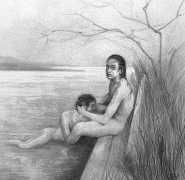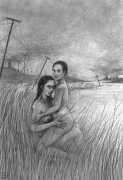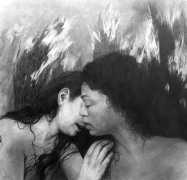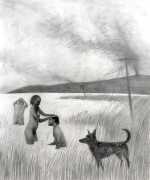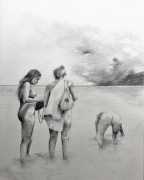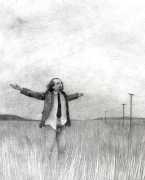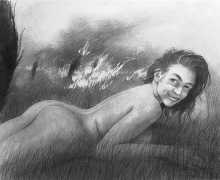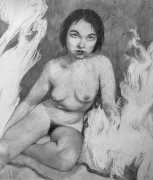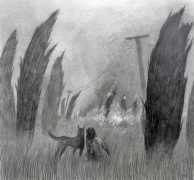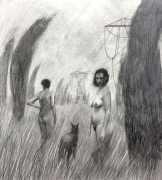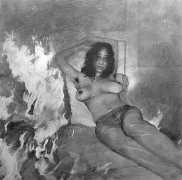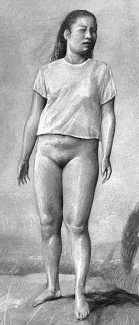 ‘Escape Fantasy’ was Waite’s first solo exhibition outside the US, hosted by London’s Cob Gallery, consisting of an extended series of photorealistic graphite drawings on the theme of escaping past and beyond the limitations of a commercial, conventional, stereotyped world. Much of this imaginative fantasy, for better and for worse, involved some kind of post-apocalyptic vision.
‘Escape Fantasy’ was Waite’s first solo exhibition outside the US, hosted by London’s Cob Gallery, consisting of an extended series of photorealistic graphite drawings on the theme of escaping past and beyond the limitations of a commercial, conventional, stereotyped world. Much of this imaginative fantasy, for better and for worse, involved some kind of post-apocalyptic vision.
Here is what the gallery had to say of the exhibition:
Waite’s practice explores the conflicts that arise at uncomfortable intersections between truth and fantasy. Her unnervingly ‘near-truth’ alternate realities are, more often than not, designed to be published to her online audience, and questions our ideas of authenticity and verisimilitude, unpacking the vulnerabilities which underpin how we interact and identify with one another virtually. Prophesying the implausibility and absurdity of a digital utopia, her work satirises the fruitlessness of human interactions in the digital realm.
Central to Waite’s practice is a powerful re-appropriation, and subsequent weaponisation, of voyeurism. She reclaims a version of female objectification by means of dissembling patriarchal structures and by way of challenging the male gaze. Waite’s images of female transgression can be interpreted as a critical response to an ambiguity between the idea of female empowerment and the countervailing rise in online, hypersexualised femininity, along with a culture of the online alter-ego which still appears to ‘court’ the male gaze.
Waite’s naked or barely-clothed subjects roam in herds across windswept grass and wetlands and empty city streets. Scattered across the compositions, the last surviving totems of our obliterated civilisation can be seen – defunct wind farms and dilapidated telephone poles form symbols of the burning embers of humanity. She imagines these post-apocalyptic species as a combination of homoerotic, hermaphrodite, independent, nomads. The works are bound together by their unsettling ambiguity: are these subjects vacant, or aware of their past; are they empowered or abandoned; in peril or in paradise? Is theirs an escape from reality – or an inescapable fantasy?
Waite’s drawings are rooted in the classic preoccupations of science fiction, where the success of this genre lies in its ability to romanticise the future by intermingling scientific fact and prophetic vision. Today we understand that many of the fantastical devices and practices imagined by it are coming to life – Huxley, Orwell, Atwood (who believes that women will bear the brunt of the climate apocalypse) each conjure fictions to which our own present-day reality has come uncomfortably close.


